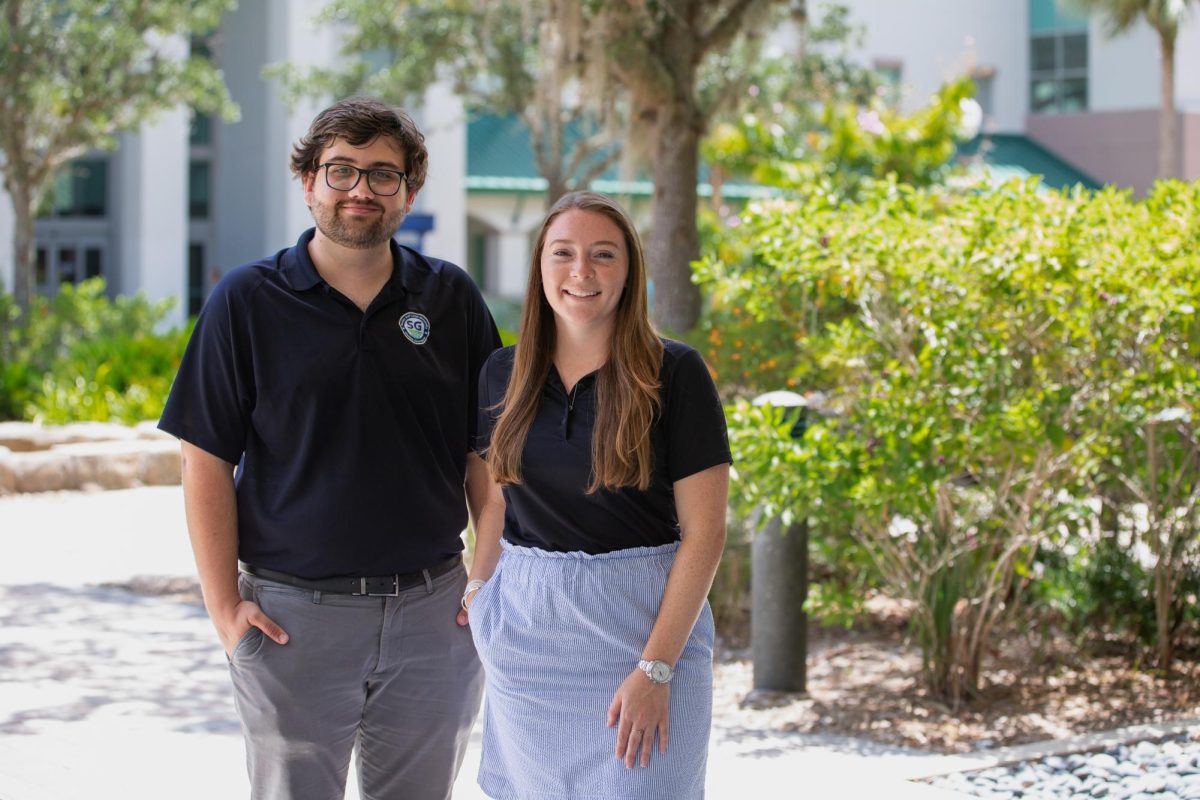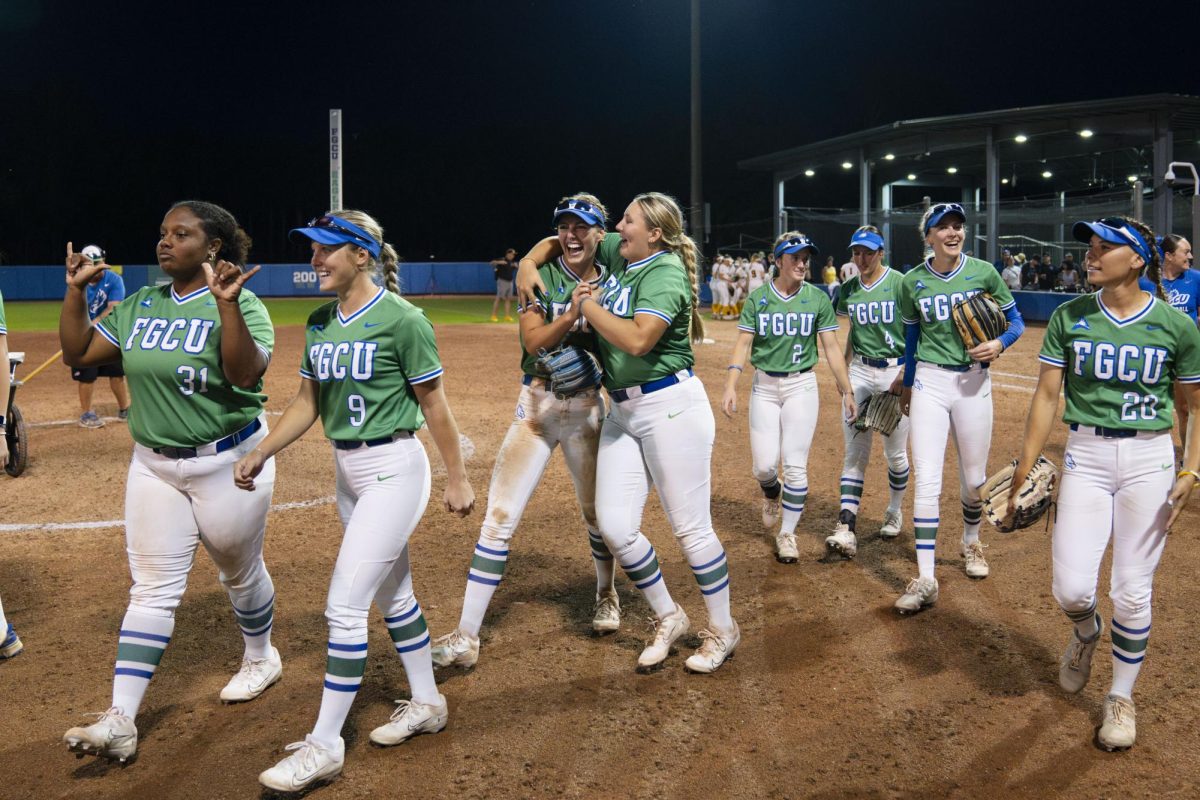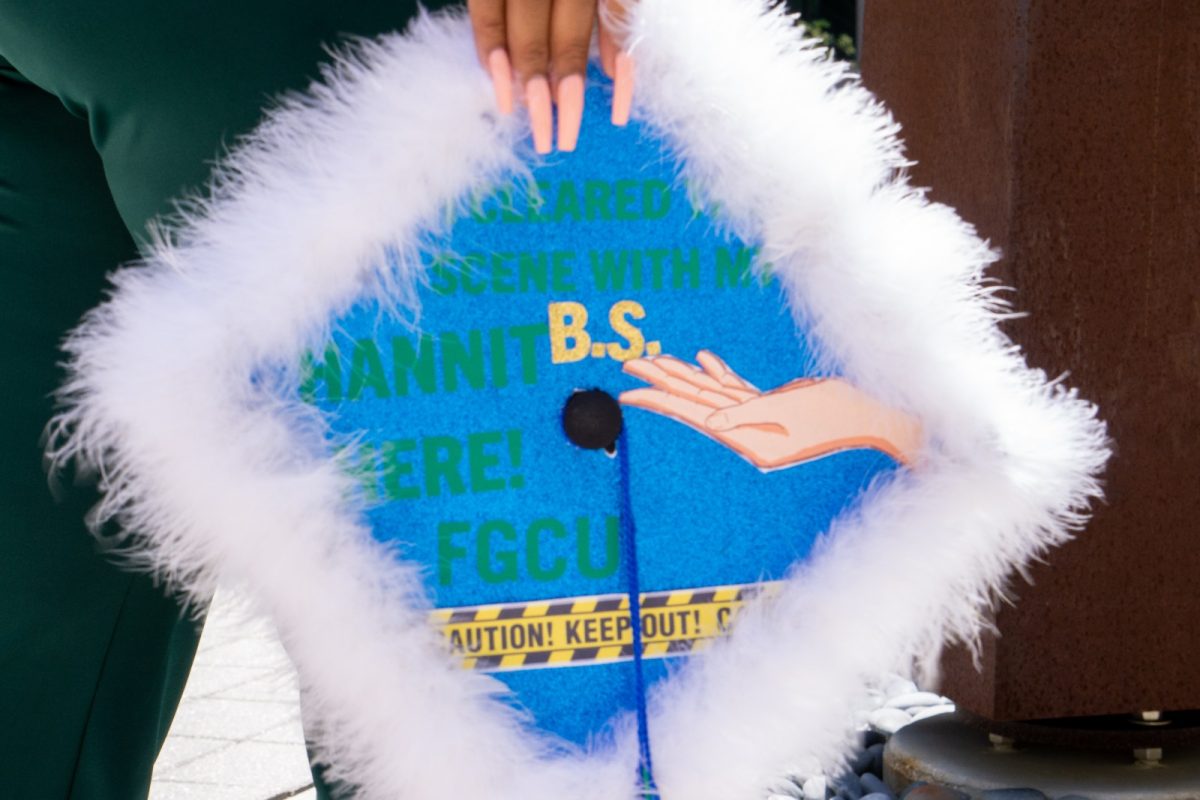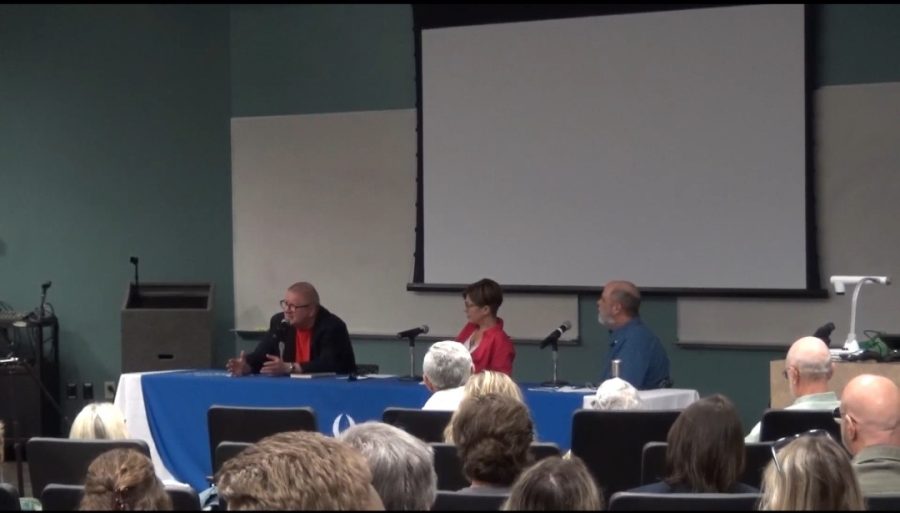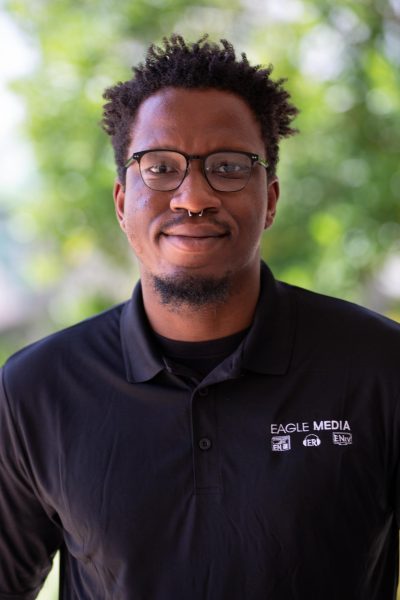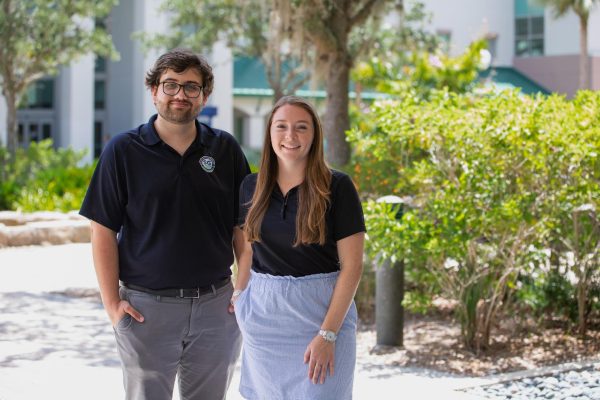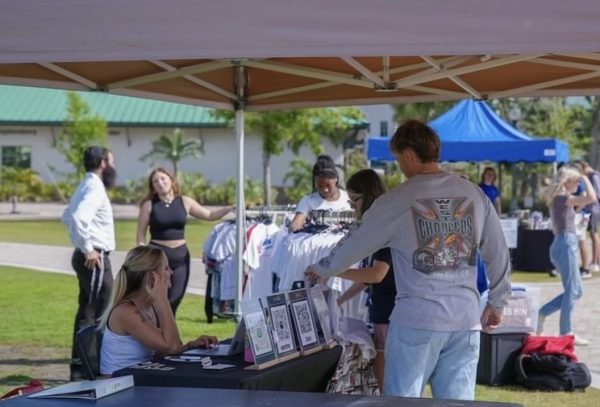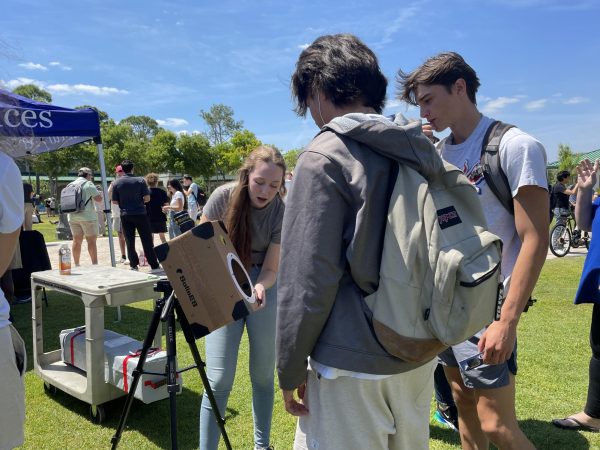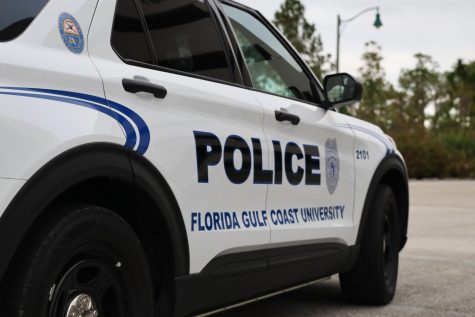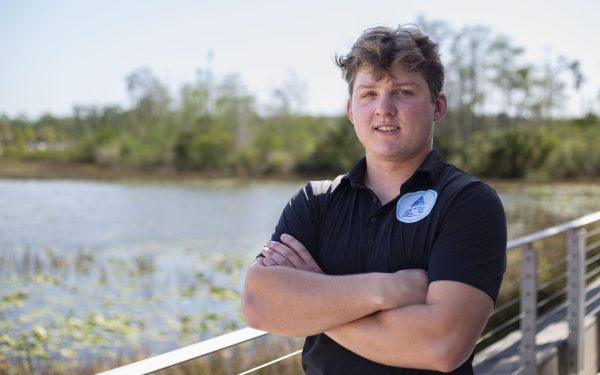How The Waco Siege and The Koreshans of Estero are Connected
Jeff Guinn and Lyn Millner spoke about their discovery of the connection between the Koreshans of Estero to David Koresh. Although similar in names, these were two separate cults with no connections until now.
March 30, 2023
The founder of FGCU’s journalism program helped make a historic discovery with local and national implications. On March 16, FGCU Professor Lyn Millner and bestselling author, Jeff Guinn, had a panel at Edwards Hall to discuss the connection between cult leaders David Koresh and Cyrus Teed.
Guinn was tasked by The Wall Street Journal to write an article on the best five books written about cults in America. In his research, he found Millner’s book, “The Allure of Immortality: An American Cult, A Florida Swamp, and a Renegade Prophet.” The Allure of Immortality goes into the story of Teed, the Estero cult leader. In that book, Guinn noticed that Koresh, who led The Branch Davidians during the 1993 Waco siege, had many similarities to Teed.

“Here was a book about someone who presented himself in a certain way, and all I could think about was David Koresh in Waco saying these same things,” Guinn said.
The Waco siege was a 1993 siege carried out by the U.S. government against Koresh’s Branch Davidians. The Branch Davidians were suspected of having a stockpile of illegal weapons inside the compound.
During the initial search, a shootout occurred in which multiple ATF agents and Branch Davidians died. After 51 days, a fire engulfed the compound resulting in the death of 76 Branch Davidians. Among the dead was Koresh.
Guinn listened to tapes of Koresh preaching during bible study, and the sermons were almost a word-to-word match of the preachings of Teed. Millner also noticed the similarities while writing her book. It frustrated her that she could not find a connection between the two.
Teed and Koresh believed themselves to be the modern-day reincarnation of the biblical figure Cyrus the Great. There was even speculation in The Washington Post that Koresh had modeled himself after Teed, but there wasn’t proof.
That is until Millner began to research the Koreshans. Millner was a freelance writer and pitched a story about Teed to The Oxford American. Coincidentally, archives were released about the Koreshans, including handwritten letters from Teed, journals, photographs, and bibles. Most of the artifacts came from the College of Life, which was the name of Teed’s college in Estero. Several of the archives went to Tallahassee. FGCU was also the recipient of some of the archives.
It was then Millner realized a 2,000-word article wouldn’t show enough respect for the magnitude of information she had. The Oxford American was no longer interested in the story. However, The University Press of Florida was interested, and Millner began to write The Allure of Immortality.
After writing the book, Millner was still frustrated that she still could not find the connection between Teed and Koresh. Her frustrations came to an end when Guinn came to FGCU with the evidence Millner was looking for.
Guinn was made aware of a book that featured a collection of Teed’s writings and prophecies by Dr. Phillip Arnold. Arnold is the executive director of The Reunion Institute, which is a think tank that specializes in religion and humanities. It was entitled “Koreshanity: The New Age Religion.”
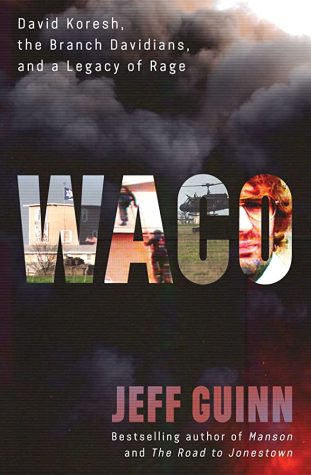
The book was self-published and there were only a few hundred copies in circulation. There were only eight libraries that had the book. In those eight, they were buried in the archives. One of those libraries was Waco McLennan County Public Library. Arnold found the book while researching The Branch Davidians during the Waco Siege.
Guinn then traveled to Waco McLennan County Public Library to see the copy for himself. When he looked over the book, he realized that the underlined portions were word-for-word copies of Koresh’s prophecies. The passages were underlined by the President of The Branch Davidians, Lois Roden. Roden visited the Koreshans in Estero and wrote about them in her newsletter, which Guinn found.
This is the proof that Koresh plagiarized his teachings from Teed even though Koresh has never stepped foot in Estero.
While Guinn is the one who uncovered the Roden connection to the Koreshans, he does not want to take the credit. He believes the two “heroes of the story” are Arnold and Millner.
Had Millner not written Allure of Immortality, Guinn would not have investigated the Koreshans. Had Arnold not told Guinn about the Koreshan book in the Waco library, Guinn would not have known about Roden’s connection to the Koreshans.
One of the reasons Guinn wanted to stop at FGCU was to celebrate the university. He took a moment to speak specifically to the students in attendance, so they’d understand the significance of the discovery.
“You are attending a school, that because of the faculty you have here, the archives you have here, you have changed the understanding of an important event in American history,” Guinn said.
The event was part of a book tour promoting Guinn’s book, “Waco: David Koresh, the Branch Davidians, and A Legacy of Rage.” Millner also signed copies of her book, “The Allure of Immortality: An American Cult, A Florida Swamp, and a Renegade Prophet.”


